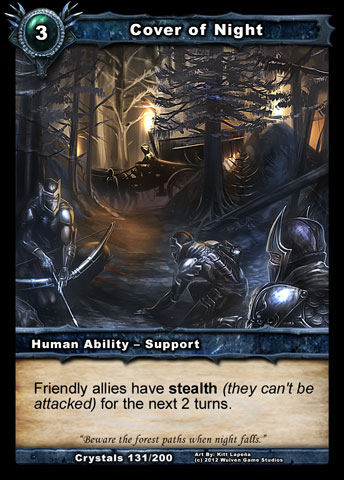
Originally Posted by
ShrapnelFox

Hi Gondorian,
The addition of a single line of logic to the Shadow Era combat phase step-by-step guide would result in the game behaving in an intuitive manner to players.
Is there any reason why the following can not be done?
(I've also incorporated your "note" into the combat phase logic)
0.Confirm that A can attack and D can be attacked by A.
0.1. If A can't attack, there is no attack.
0.2. If A has attack value of 0, there is no attack.
0.3. If D can't be attacked by A (e.g. D has stealth), there is no attack.
0.4. If the attack was initiated directly through a player action (as opposed to a card effect) and the attacking hero/ally is exhausted, there is no attack.
1. A attacks D, triggering the start of the combat phase (A and D are now considered "in combat")
1.1. Any effects that trigger off "when A attacks D" or "when A/D enters combat" resolve.
1.2. If A or D has left play (e.g. through being killed), we jump to step 4.
1.3 . If D has defender, then Steps 2 and 3 are reversed.
2. D takes attacking combat damage from A, equivalent to A's attack value (which can be 0).
2.1. The combat damage to D may be reduced, increased or prevented by card effects.
2.2. If D is a hero, the combat damage can be reduced by the defense value of his armor.
2.3. If the combat damage is greater than zero, it is dealt to D.
2.3.1. Any effects that trigger off that damage being dealt resolve.
2.4. Durability is updated for A's weapon and D's armor.
2.4.1. If A is a hero, the durability of her weapon used is reduced by 1.
2.4.2. If D is a hero, the durability of his armor is reduced by 1.
2.5. If A or D has left play (e.g. through being killed), we jump to step 4.
3. If D can defend and has attack value of at least 1, A takes defending combat damage from D, equivalent to D's attack value.
3.1. The combat damage to A may be reduced, increased or prevented by card effects.
3.2. If A is a hero, the combat damage can be reduced by the defense value of her armor.
3.3. If the combat damage is greater than zero, it is dealt to A.
3.3.1. Any effects that trigger off that damage being dealt resolve.
3.4. Durability is updated for D's weapon and A's armor.
3.4.1. If D is a hero, the durability of his weapon used is reduced by 1.
3.4.2. If A is a hero, the durability of her armor is reduced by 1.
3.5. If A or D has left play (e.g. through being killed), we jump to step 4. (This is only relevant when D has defender, which causes steps 2 and 3 to switch.)
3.6. If A is unable to attack (frozen, disabled, canít attack), we jump to step 4. (This is only relevant when D has defender)
4. The combat phase has ended (A and D are no longer "in combat").
4.1. Any effects that trigger off "end of combat" or "leaves combat" resolve.
4.2. If the attack was initiated directly through a player action (as opposed to a card effect), the attacking hero/ally is exhausted if it has done its maximum number of attacks that turn (default is 1).



















Bookmarks